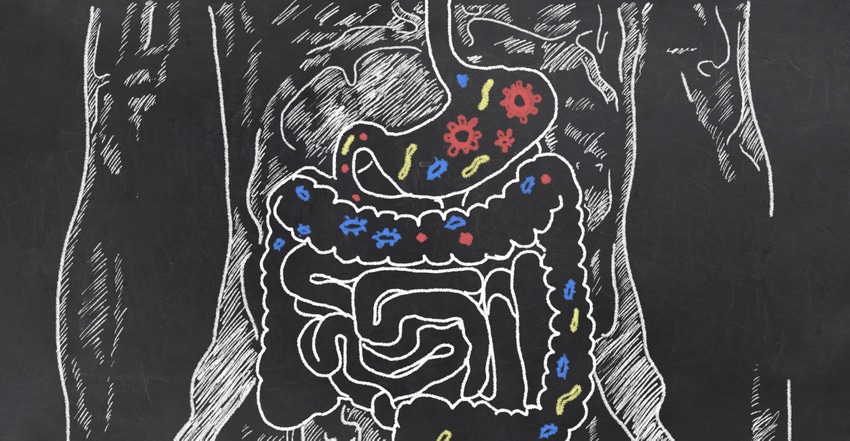Research show prebiotics such as resistant starch help protect the gut barrier, leading to better digestion and immune health.
January 27, 2020

Recent research has demonstrated the importance of prebiotic, fermentable dietary fibers such as resistant starch to help protect the critically important gut barrier.
At its simplest, the gut barrier is comprised of a single layer of cells (colonocytes) protected by a layer of mucus. Underneath the layer of colon cells is the mucosal immune system. All three of these layers are important in maintaining the integrity of the gut barrier.1 Breakdown in gut barrier integrity is likely involved in major diseases including but not limited to bowel diseases (e.g.., inflammatory bowel disease [IBD], celiac disease, etc.) autoimmune diseases (e.g., type 1 diabetes, allergies, lupus, etc.) and metabolic diseases (e.g., obesity and cancer).2,3,4
The first line of defense is the mucus layer, which is a viscous layer created from glycoproteins and mucins that are secreted by intestinal goblet cells. It functions both as a lubricant as well as a protection for the epithelial cells. The outer layer of the mucus is populated by many types of bacteria, while the dense, inner layer is largely devoid of bacteria, keeping the surface of epithelial cells free from bacteria. This dense inner layer also contains antimicrobial peptides and secretory antibodies that help protect the epithelial layer from pathogens.1
The second layer of defense is the layer of epithelial cells of the intestinal tract. These colonocytes are one of the few cells in the body that do not obtain fuel from the blood stream; they absorb their fuel from intestinal tract contents. The products of fiber fermentation, the short-chain fatty acids (SCFAs), especially butyrate, serve as the primary fuel for colonocytes.5,6
The third and final defense of the intestinal barrier is the mucosal immune system, located deep within the intestinal epithelium. It is also known as the gut-associated lymphoid tissue (GALT) and contains up to 70% of the immune cells of the entire human body.7 This system contains numerous immune cell populations, which manage pro-inflammatory cytokines (such as tumor-necrosis factor-alpha [TNF-a] and interlukin-6 [IL-6]) and anti-inflammatory cytokines (such as IL-10 and transforming growth factor beta [TGF-b]).
Access this article in its entirety to learn how resistant starch benefits the three layers of the intestinal barrier in Natural Products Insider's prebiotic digital magazine.
Rhonda Witwer is the executive director of resistantstarchresearch.com. She has worked with resistant starch for 17 years, having previously been the business manager of Ingredion's Hi-maize resistant corn starch and vice president of marketing for International Agriculture Group, manufacturers of NuBana green banana powder. Witwer earned her master’s of business from The University of Pennsylvania's Wharton School, specializing in marketing. She consults on the business development and marketing of ingredients and can be reached at [email protected].
References
1. Camilleri M et al. "Role for diet in normal gut barrier function: developing guidance within the framework of food-labeling regulations". Am J Physiol Gastrointest Liver Physiol. 2019;317:G17-G39.
2. Groschwitz KR and Hogan SP. "Intestinal barrier function: molecular regulation and disease pathogenesis." J Allergy Clin Immunol. 2009 July;124(1):3-22.
3. Viggiano D, et al. "Gut barrier in health and disease: focus on childhood." Eur Rev Med Pharmacol Sci. 2015;19:1077-1085.
4. Sorini C, et al. "Loss of gut barrier integrity triggers activation of islet-reactive T cells and autoimmune diabetes." Proc Nat Acad Sci. 2019;116(30):15140.
5. Wachtershauser A, Stein J. "Rationale for the luminal provision of butyrate in intestinal diseases." Eur J Nutr. 2000;39:164-171.
6. Thibault R, et al. "Butyrate utilization by the colonic mucosa in inflammatory bowel diseases: a transport deficiency." Inflamm Bowel Dis. 2010; 16:684-695.
7. Pearson C, Uhlig HH, Powrie F. "Lymphoid microenvironments and innate lymphoid cells in the gut." Trends Immunol. 2012;33(6):289-296.
About the Author(s)
You May Also Like




.png?width=800&auto=webp&quality=80&disable=upscale)